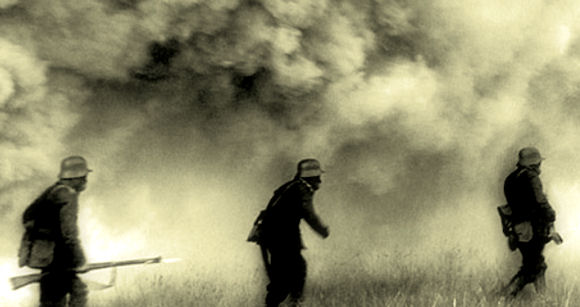 |
| Germans Used Gas Extensively to Defend Against the Americans |
Four years of attrition had worn down the Imperial German Army by fall 1918. Only 12 German divisions on the Western Front were at full strength in November 1918. German units facing First Army during the final phase of the Meuse-Argonne Offensive found themselves outnumbered three-to-one and incapable of counteroffensive action. Chief of the Imperial German General Staff, Field Marshal Paul von Hindenburg, and German Army Deputy Chief of Staff, General Ludendorff, had abandoned the notion of winning the war and planned for a piecemeal fighting retreat in August 1918. After General Pershing's First Army launched its massive Meuse-Argonne Offensive on 26 September 1918, General Ludendorff issued an order restricting his armies to defensive maneuvers and initiating a rearguard action toward the Franco-German border on 30 September.
 |
| German Support Bunker in Argonne Sector |
The Imperial German Army perfected a defense-in-depth technique by 1917. This tactic called for defenders to allow attackers to capture lightly manned forward positions so they could decimate them with dense machine-gun and artillery fire from areas farther in the rear. General Hunter Liggett's army faced this type of defense-in-depth along the Meuse River in November 1918.
 |
| General Marwitz |
After the war, First Army Commander, General Hunter Liggett commended General Georg von der Marwitz, the commander of the German Fifth Army, for orchestrating an effective fighting retreat without the benefit of motor transport and having only 12 combat-ready divisions under his command. Marwitz issued a general order to his army on 1 November instructing all commanders to utilize the cover of night to retreat from towns and villages, destroy all bridges across the Meuse, and use artillery to slow the pursuing Americans.
A Selection From: American Tactical Advancement in World War I, by Jeffrey LaMonica, McFarland & Company, 2017

No comments:
Post a Comment